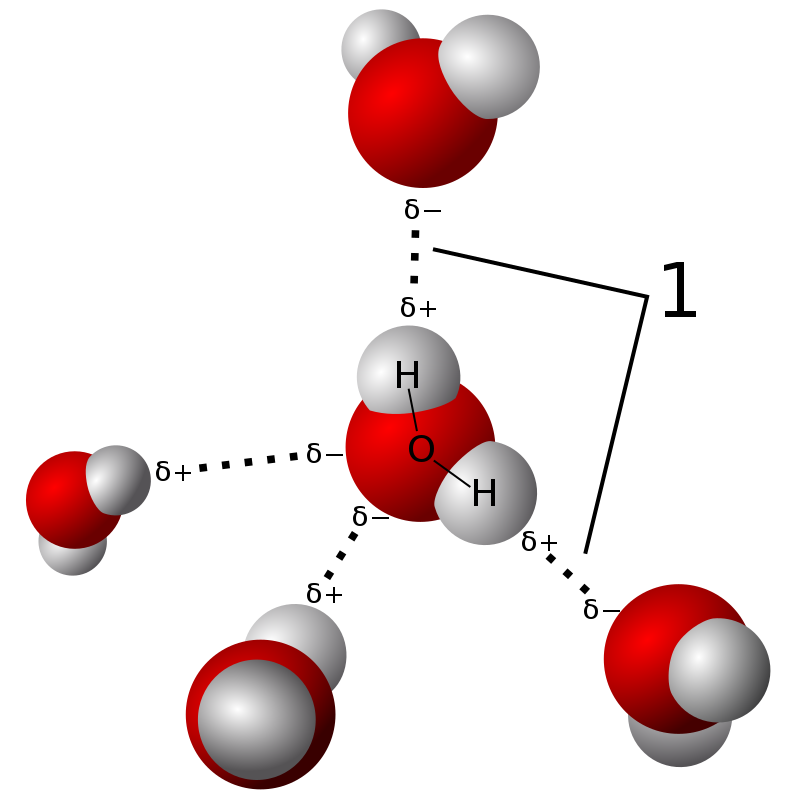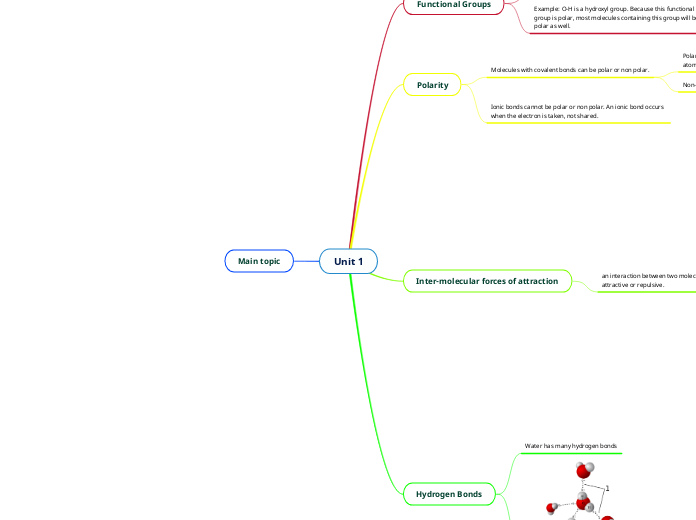Unit 1
Functional Groups
A group of atoms responsible for certain properties of a molecule
they determine how certain molecules will interact with eachother
Example: O-H is a hydroxyl group. Because this functional group is polar, most molecules containing this group will be polar as well.
Polarity
Molecules with covalent bonds can be polar or non polar.
Polar bonds: H2O is an example. Electrons are shared but 1 atom holds them more tightly
Non-polar bonds: electrons are shared evenly
Ionic bonds cannot be polar or non polar. An ionic bond occurs when the electron is taken, not shared.
Inter-molecular forces of attraction
an interaction between two molecules that can either be attractive or repulsive.
Dispersion
Definition: The electrons around an atom in a molecule are, on average, evenly distributed around the nuclei, but at any time they could all be found on one side of a molecule. At this instant, a mini-negative charge would result which can repel electrons in a nearby molecule. The two molecules attract.
Dipole-dipole
Definition: The electrons in a covalent bond in a functional group are not shared equally. This causes a partial negative charge to exist on one end of the functional group, and a partial positive charge on the other. Oppositely charged ends of functional groups on two different molecules attract.
Ionic-dipole
Definition: The electrons are unequally shared so the functional group is negatively charged or positively charged. Oppositely charged functional groups attract.
:
Hydrogen Bonding
Definition: A special case of dipole involving functional groups containing H bonded to N or O because electrons are more unequally shared. The partial negative and positive charges are stronger. Oppositely charged ends of functional groups on two different molecules attract.
Hydrogen Bonds
Water has many hydrogen bonds

it is the bond in between H2O molecules
